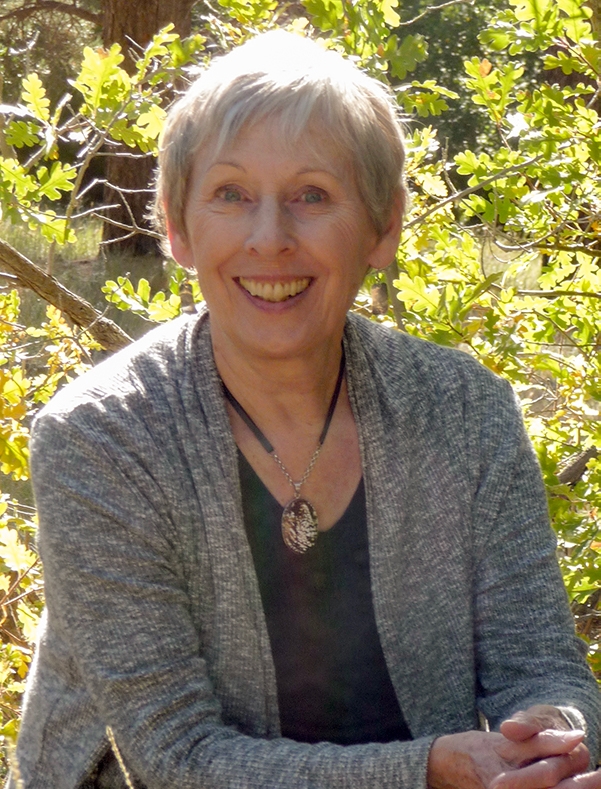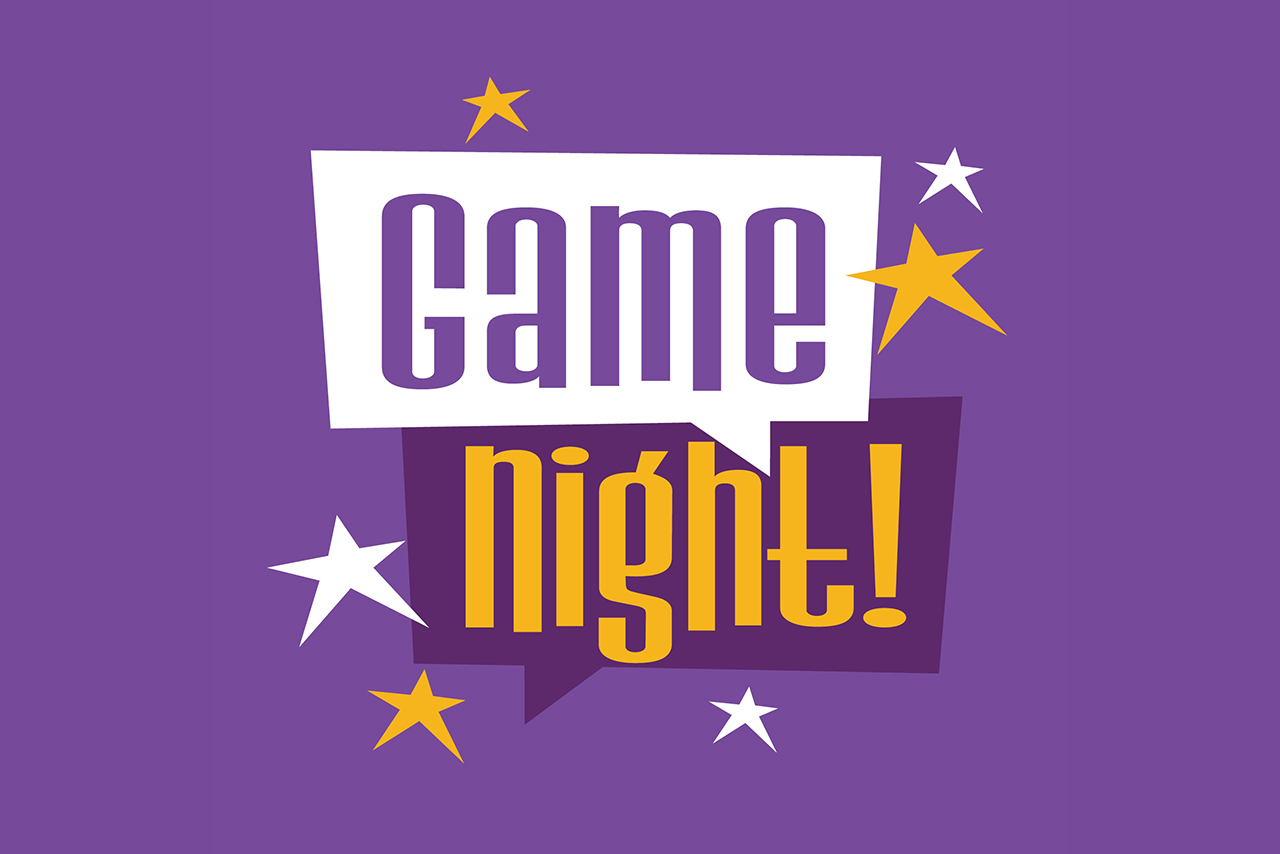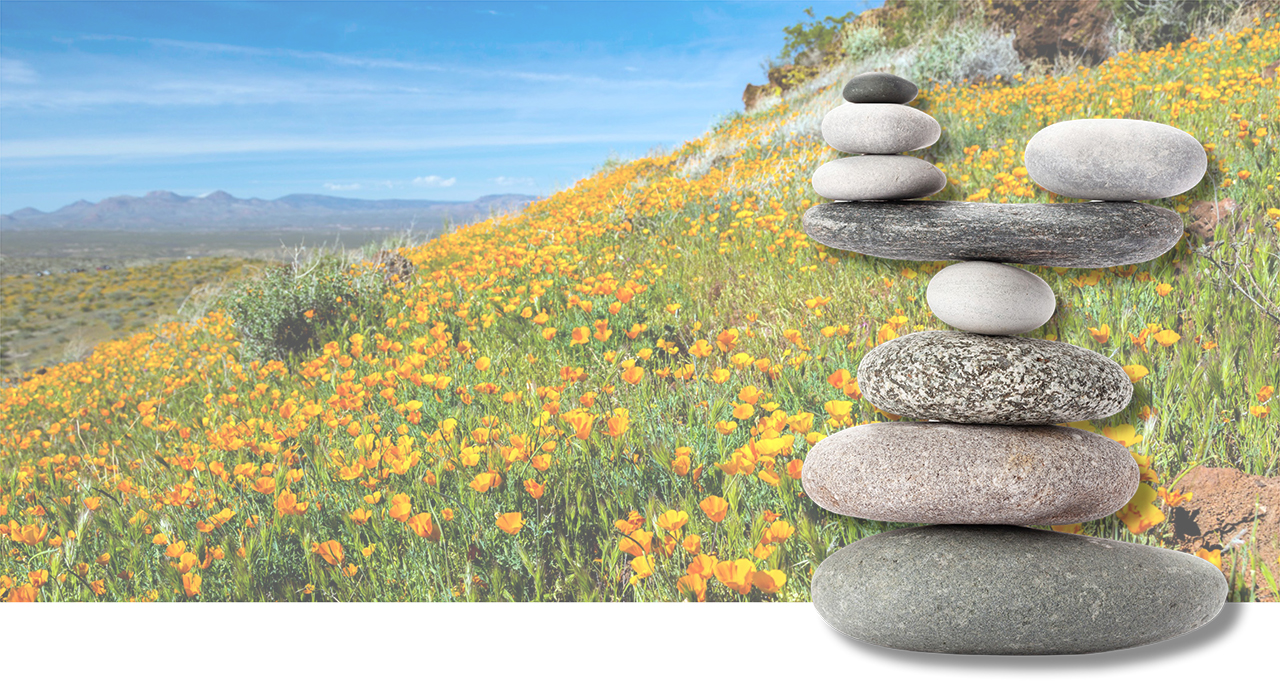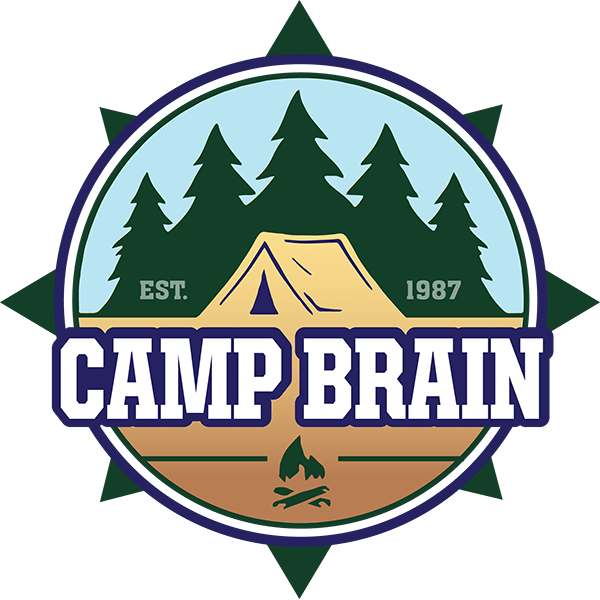Think Tall-Don’t Fall Sessions with Christina Boyd Help Brain Injury Survivors Find Their Rhythm
by Ellen Fortini
“Time for our rhythm section!” Christina Boyd announces as she cranks up a peppy Cajun tune. A dozen of us are attending her online class Think Tall – Don’t Fall via Zoom and absolutely no one is shy about moving to the beat. We’re all standing or sitting and slapping and tapping as smiles are spreading across everyone’s faces, including Boyd, who has explained that every cell in our bodies has its own pulse and the rhythmic movements we are making in time with the music are bringing our cells back into sync.
“When we have trauma or sustained stress, these rhythms can be thrown off,” she explains. “They can be re-synced by clapping, tapping, or moving to an external rhythm.” Loosened muscles, fascia, organs, and increased blood flow are helping us regain focus and feel refreshed in the early afternoon.
Each week for the class, Boyd, a movement therapist based in Flagstaff, plans a series of simple, repetitive exercises and activities that when combined, offer an effective way to clear the mind and allow for improved memory, balance, coordination, and posture.
Think Tall-Don’t Fall Sessions with Christina Boyd Help Brain Injury Survivors Find Their Rhythm
by Ellen Fortini
“Time for our rhythm section!” Christina Boyd announces as she cranks up a peppy Cajun tune. A dozen of us are attending her online class Think Tall – Don’t Fall via Zoom and absolutely no one is shy about moving to the beat. We’re all standing or sitting and slapping and tapping as smiles are spreading across everyone’s faces, including Boyd, who has explained that every cell in our bodies has its own pulse and the rhythmic movements we are making in time with the music are bringing our cells back into sync.
“When we have trauma or sustained stress, these rhythms can be thrown off,” she explains. “They can be re-synced by clapping, tapping, or moving to an external rhythm.” Loosened muscles, fascia, organs, and increased blood flow are helping us regain focus and feel refreshed in the early afternoon.
Each week for the class, Boyd, a movement therapist based in Flagstaff, plans a series of simple, repetitive exercises and activities that when combined, offer an effective way to clear the mind and allow for improved memory, balance, coordination, and posture
Each week for the class, Boyd, a movement therapist based in Flagstaff, plans a series of simple, repetitive exercises and activities that when combined, offer an effective way to clear the mind and allow for improved memory, balance, coordination, and posture. These techniques are part of the Brain Gym educational model, developed by Paul and Gail Dennison in the classroom in the 1960s to improve academic comprehension, communication, and emotional well-being. The Dennisons initially used Brain Gym for children, but the practice has grown to include clients of all ages and abilities.
Boyd was introduced to Brain Gym and movement therapy while participating as a training assistant at a summer intensive program for Neuro-Linguistic Programming (NLP) in the early 1990s. As a study that focuses on changing thought patterns and behaviors by changing our ways of thinking, “NLP is a great way to help people,” says Boyd. So when a fellow training assistant told her about Brain Gym, Boyd immediately recognized the benefits the method could add to her practice. “So, I sort of backed into it, in a way,” she explains. “I thought this would be great to add to my practice because it was very solution-oriented.”
Boyd uses the same tidy phrase to describe herself – “solution-oriented” – and says her friends and family can always rely on her to come up with an effective answer to problems. “My nature is to help people,” she says. And so it stands to reason that her practice reflects her personal mantra. But in movement therapy, focusing on solutions means that participants can identify their needs and get right to healing rather than rehashing what brought them to her office in the first place. “We don’t have to spend a lot of time on what we call “The Story”: what happened, how it happened, and who was at fault. NLP and Brain Gym have techniques that move you quickly from one state to another state.”
Working in tandem with a counselor, Boyd offers Brain Gym therapy to a variety of populations. But it’s not just the physical aspects that attract clients; many come for the emotional aspect. Children with hyperactivity issues can find focus and those falling behind academically can get back on track. Older children and teenagers can resolve trauma and social-emotional issues, while older adults with PTSD, OCD, and diseases such as alcoholism can also benefit from these sessions. In the past five years, Boyd says she has been able modify the activities to serve seniors and those recovering from brain injury as well as diseases such as stroke, Parkinson’s, and Multiple Sclerosis.
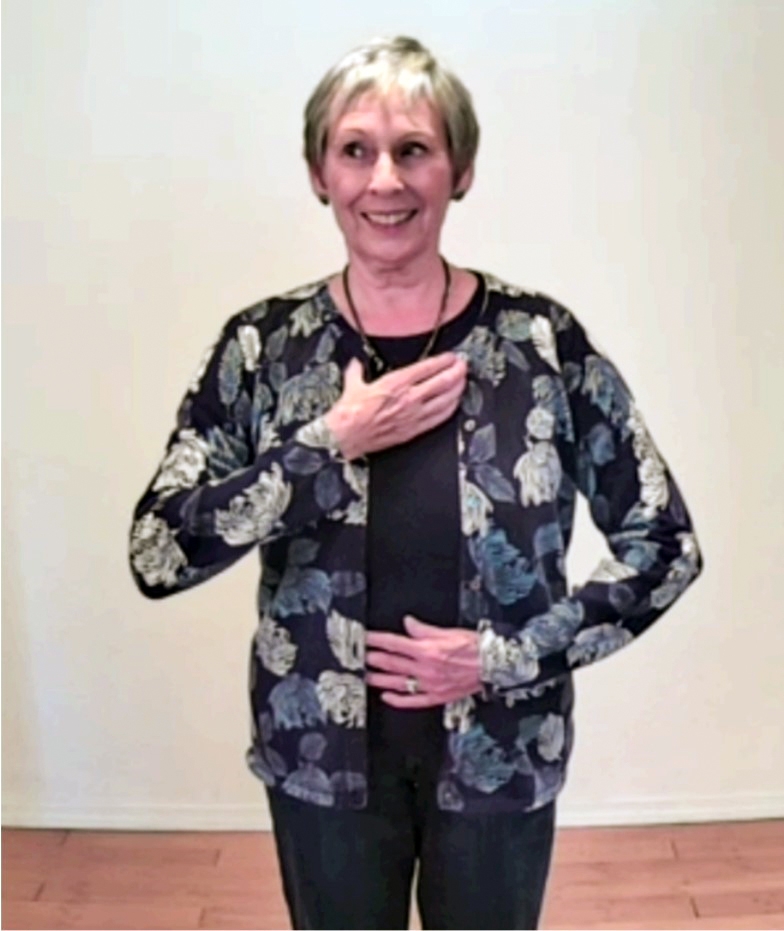

















Flagstaff’s beautiful mountains and easy access to the outdoors is what brought Boyd there permanently in 1992. Born in upstate New York, she was raised in different places across the country, and was pleased to settle in an environment where she could camp and hike so close to home. Her practice, Highpoint Mind & Movement, sees clients from ages 5 to 97. She works directly in sessions with a counselor, and individuals who already benefit from counseling can visit her for further movement therapy, as well as online group classes such as Think Tall – Don’t Fall, which was developed exclusively for the Brain Injury Alliance of Arizona. The class includes modifications for special populations, targeting survivors of brain injury and brain trauma, as well as those with decreased mobility, including people who use wheelchairs.
The physical nature of the therapy Boyd offers opens pathways and reconnects areas of the brain, so participants can find new ways of thinking and comprehension to find solutions that lead to success. Boyd employs NLP techniques together with movement therapy for maximum benefit, enabling clients to focus on their goal and then shift the neurology of the body. The practical, simple movements can be done anywhere at any time to enable positive change. Clients learn basic techniques like Cross Crawls – touching the hand to the opposite thigh – and Lazy Eights eye patterns – moving the eyes in an infinity shape – to connect the left and right sides of the brain and body. Brain Buttons – concurrently touching with one hand at the collarbone and the other hand at the bellybutton – activates the parasympathetic nervous system to calm the body. One practical application for children is massaging the earlobes, which activates auditory centers on both sides of the brain, resulting in being able to focus in the classroom by blocking background noise.
Success stories in Boyd’s line of work are abundant and inspiring, and it’s due in no small part to her tenacity for finding solutions. She tells about working with a young boy who wasn’t up to grade level in reading. Despite everything she was doing to help him, nothing seemed to be working. After some research, it struck her that the boy may have experienced a trauma that prevented academic development. She asked his mother if he had experienced a divorce, a family member’s death, a relocation to a new home, or any other difficult life situation in his eight years. The mother said no, and that the only trauma was one that she had shared with him: he had a difficult birth and was born with the umbilical cord wrapped around his neck. Boyd immediately knew that the boy’s fight or flight response was probably still activated and that the physical and neurological nature of reading – head down, eyes focusing on small details – paralleled the trauma of his birth. After working with the boy on movements specifically designed to break that connection, his academics skyrocketed, and he shot to the top of his class.
Eight sessions seems to be the sweet spot for most movement therapy clients and is when they begin to notice changes and experience the cumulative benefits. Connie was a client of Boyd’s from Sedona who had a stroke and was experiencing aphasia, the inability to understand or express speech. Her daughter would drive Connie to Flagstaff for weekly Brain Gym sessions. “I never know,” says Boyd of her clients. “I will take anybody. I tell them, ‘I don’t know if it’s going to help, but something will change.’” Like clockwork, it was after Connie’s eighth session that Boyd received a call from her husband, whom she had never met, because it was Connie’s daughter bringing her each week. “What are you doing with my wife?” he asked, and described a Connie no one in her family had seen in years: getting her hair fixed and her nails done, and even making the effort to answer the phone and the door despite still being unable to speak. “I have my wife back!” he told her. Boyd says that while the Brain Gym sessions did nothing to improve Connie’s aphasia, it was her self-confidence that grew and, in many ways, Connie got her life back. Her success reflects a piece of advice Boyd was once given and that she subscribes to when dealing with clients: Allow people to be the best they can be.
Inspiring stories stem from the influence of inspiring people and Boyd points to the late Cecilia Koester as her greatest influence. A former schoolteacher, Koester wrote the book I Am the Child: Using Brain Gym with Children Who Have Special Needs about her experiences teaching children of different developmental abilities. Koester taught workshops around the world and Boyd describes her as “a model of compassion and creative problem solving.” Koester’s legacy is a set of movements developed for those with severe disabilities who are not able to do common Brain Gym exercises such as Cross Crawls and eye movements. She called them Building Block Activities and worked closely on them with the developers at Brain Gym. “And she never, ever gave up. She has always been my inspiration,” says Boyd.
In addition to utilizing the Dennisons’ and Koester’s work in Brain Gym, Boyd enthusiastically researches and reaches out to colleagues to find concrete strategies to help each of her clients reach their goals. “This work is not a program that has a beginning and an end,” emphasizes Boyd. “Everyone I see in my classes or privately, everything we do is personal to them. It is what they need in particular for the goal that they have, and it is tailored based on their needs. So, I listen and take my cues from them. They actually guide the session and give me the clues for what they need.”
Boyd’s thoughtful insight and experience is resulting in better quality of life for those she dedicates her time to. “Unequivocally, everyone benefits in some way from movement therapy,” she states. “If people are willing to put in the time, I can almost guarantee that they will benefit in some way, whether it be their mood or their mobility. It might not be getting back an ability they had wanted, but it might shift from being something that they viewed as being tremendously limiting, to being an inconvenience, because all the aspects around it shifted.”
In other words, solutions found.
ABOUT THE AUTHOR — Ellen Fortini is a globetrotting writer, editor, and public relations professional. She currently resides in Las Vegas, Nevada.
ABOUT BRAIN INJURY ALLIANCE OF ARIZONA
The Brain Injury Alliance of Arizona (BIAAZ) is the only statewide nonprofit organization dedicated to improving the lives of adults and children with all types of brain injuries through prevention, advocacy, awareness and education. BIAAZ also houses the Arizona Brain Health Resource Center, a collection of educational information and neuro-specific resources for brain injury survivors, caregivers, family members and professionals.
What began in 1983 as a grassroots effort has grown into a strong statewide presence, providing valuable life-long resources and community support for individuals with all types of brain trauma at no charge.
The Brain Injury Alliance of Arizona:
- Works with Congressional Brain Injury Task Force
- Houses Arizona Brain Health Resource Center
- Hosts Statewide Opioid Use Disorder & Cognitive Impairment Workgroup
- Has Statewide Opioid Use Disorder & Cognitive Impairment Response team with peer support, training, and family wraparound services
- Facilitates Brain Health Advisory Council
- Manages statewide Neuro Info-Line: 888-500-9165


